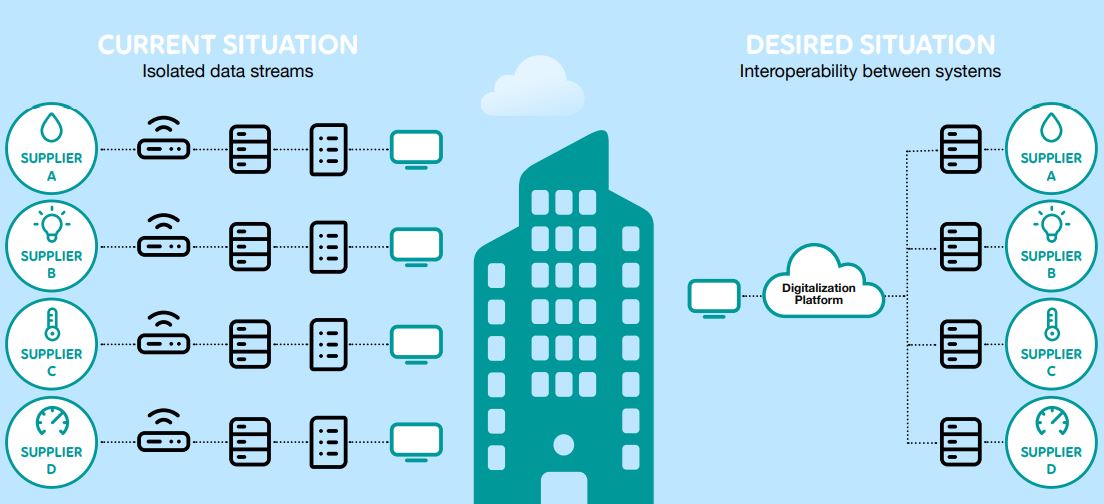Data value is lost in isolation
Data is most valuable when it can be combined and compared to other relevant data. This remains a key challenge for the real-estate industry, as data is often siloed. To capture and scale IoT-enabled solutions and unlock the isolated data streams for interoperability between systems, the data needs to be standardized, accessible, self-owned, and readily shared. This to enable synergies to optimize operations and services to the tenants.
This is an extract from: Digitalization of Buildings in the Nordics & Baltics.
As we have realized by now, facilities have a wide array of infrastructures and electronics that can be combined and connected to transmit real-time data. Collectively the systems used to manage the security, life systems, facility management, and energy performance of buildings account for over 50-70 bnEURO globally. In addition, tenants, staff, residents, visitors and other facility users leave traces through their connected handheld devices. The amount of data that could be amassed is immense. What data then, and why would a facility owner, facility manager, or resident make the effort?
Data has the quality of increasing in value at the rate it is compared and contrasted to other data. An observation, a time, and a place make more sense together than either of the data points analyzed individually. More practically speaking, the temperature in a facility is relevant once compared over time, across different rooms, and in respect of when it is used. Such a context permits optimization of heating and ventilation in order to spare the environment while saving costs. Data from complementary systems such as lighting and outlets could further supplement energy consumption awareness and insights. Moreover, the usage of these systems can indirectly provide insights in behavioral patterns used for future planning, system control, or changes to the property layout, etc.
Yet, to date we have not seen many successful cases of integrated data streams, fact-based decision making, and applied analytical tools in the real estate industry. Being a truly data driven organization remains fiction for many players in the industry. Not only is it difficult to recognize applications for all possible data streams, but even when application areas can be conceived, facility owners across all categories point to the same underlying issue – a lack of openness.

The figure above portrays a typical facility with multiple non-integrated modules, typically procured separately. Such modules, when connected, can typically only deliver isolated data streams related to their operating data and related metrics. The data is usually delivered in a visual format with charts, aggregated and readable only by using a proprietary system. After all, suppliers are incentivised to create lock-in effects through development of such systems.
This lack of interoperability between systems means there are no easy ways of extracting, processing, and combining data for analytical work. To put it in perspective, data scientists are reportedly spending 80% of their time working with collection, cleaning, and organisation of data – i.e. the necessary prework to set up a foundation for analysis. The potential benefits of data are therefore not always seen as worth the time and effort.
The industry has thus looked to renew their IT structures starting with reclaiming ownership of their own data, adhering to data standards and open APIs to improve system interoperability and using digital platforms to collect and analyze their data as intended. Through these efforts, data synergies are enabled and opportunities to identify new use areas are enhanced.
Cookie notification
Cookies allow us to optimize your use of our website. We also use third-parties cookies for advertising and analytics. Please read our Cookie Policy for more information.

